Chinese Mystery Snail, Banded Mystery Snail and New Zealand Mud Snail
Table of contents:
- Aquatic invaders
- Pathways of invasion
- Threats to the environment, the economy and society
- Focus on an invader
- What you can do
Aquatic invasive species in Quebec
Chinese Mystery Snail
(Cipangopaludina chinensis)  Photo credit: L. M. Campbell Saint Mary's University
Photo credit: L. M. Campbell Saint Mary's University
Banded Mystery Snail
(Viviparus georgianus) Photo credit: DFO
Photo credit: DFO
The Chinese Mystery Snail, also known as Oriental Mystery Snail, and the Banded Mystery Snail are 2 molluscs that are part of the gastropods. These freshwater snails are said to have been introduced to North America by the aquarium trade.
Characteristics
| Chinese Mystery Snail | Banded Mystery Snail |
|---|---|
|
|
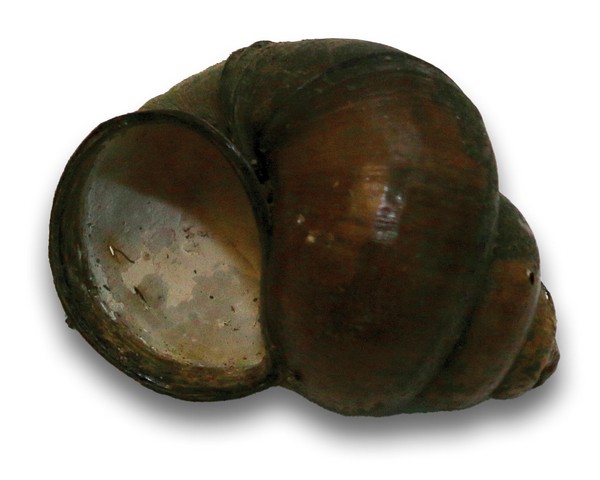
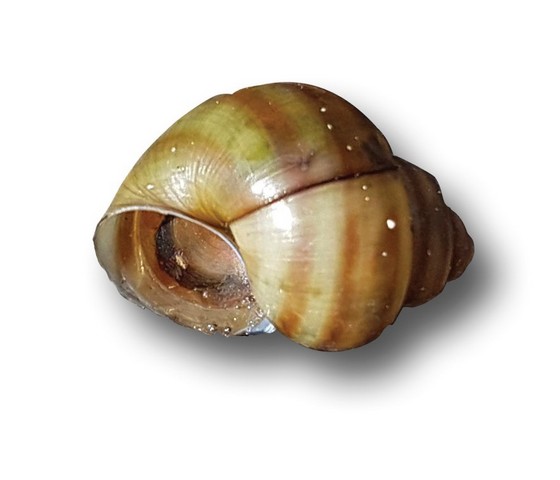
Origin
The Chinese Mystery Snail is native to eastern Russia and Southeast Asia (China, Japan, Korea), and the Banded Mystery Snail comes from the east-central United States. The Chinese Mystery Snail was first reported in the Niagara River in 1931, in the lakes Erie in the 1940s and Champlain in 2003. The Banded Mystery Snail was first observed in the lakes Michigan and Erie at the beginning of the last century, as well as in the Quebec portion of the St. Lawrence River since 1953. After their introduction, these molluscs were disseminated through various pathways including the water garden trade, watersports, and recreational fishing.
Habitat
The Chinese Mystery Snail and the Banded Mystery Snail live in various types of aquatic habitats (ponds, marshes, rivers, lakes, and irrigation canals) in depths less than 3 m where currents are slow, and bottoms are covered with mud or loam. They are also found in areas with sandy and gravelly bottoms. These snails usually avoid large rivers with strong currents, but the Banded Mystery Snail is present in the St. Lawrence River.
Similar species
Several other species of freshwater snails are native to Quebec so experts are often needed to differentiate them. The Chinese Mystery Snail also closely resembles the Japanese Mystery Snail (Cipangopaludina japonica), an exotic snail originating from Southeast Asia, whose shell is more elongated. This last species is present in Lake Erie.
Cipangopaludina japonica
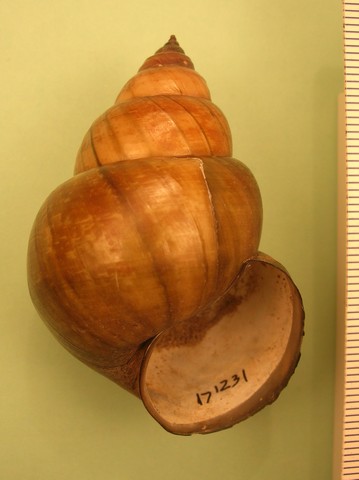
New Zealand Mud Snail
(Potamopyrgus antipodarum)
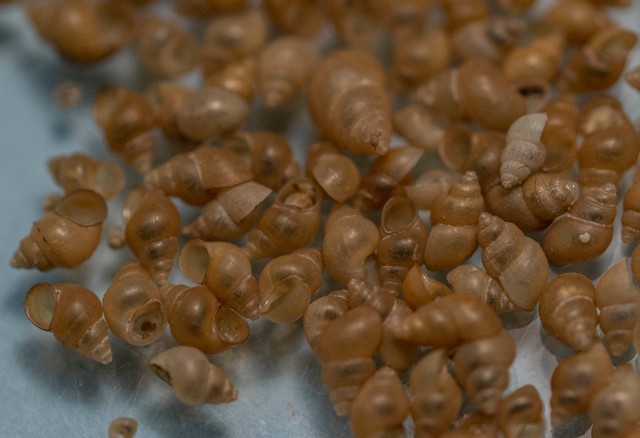
Characteristics
- between 0.5 cm and 0.7 cm
- thin shell that varies in shape, with 5 to 7 whorls winding clockwise, separated by deep sutures (lines of contact between the turns)
- colour varies from light to dark brown
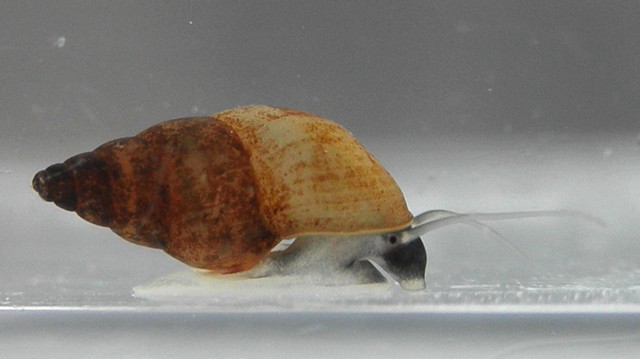
Origin
The New Zealand Mud Snail, a mollusc that is part of the gastropods, comes from New Zealand and its surrounding islands. First reported in Lake Ontario and the St. Lawrence River in 1991, this freshwater snail is said to have been introduced to North America by the aquarium trade. After their introduction, these snails were disseminated through various pathways including the water garden trade, maritime traffic, watersports and recreational fishing.
Habitat
The New Zealand Mud Snail lives in a variety of aquatic habitats (ponds, marshes, rivers, lakes, and irrigation canals), where the bottom is covered with silt, clay, sand, gravel, or large algae. This snail lives mainly in the littoral zone, but it can survive up to 25 m of depth.
Similar species
Several other species of freshwater snails are native to Quebec so experts are often needed to differentiate them. The New Zealand Mud Snail resembles the Common Mud Snail (Potamopyrgus estuarinus) and Potamopyrgus pupoides, but these 2 species of snails live in brackish waters.
Potamopyrgus estuarinus
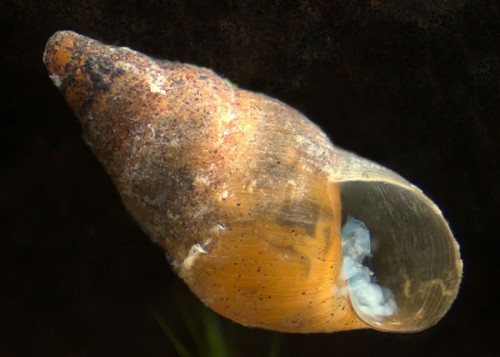
- Date modified: